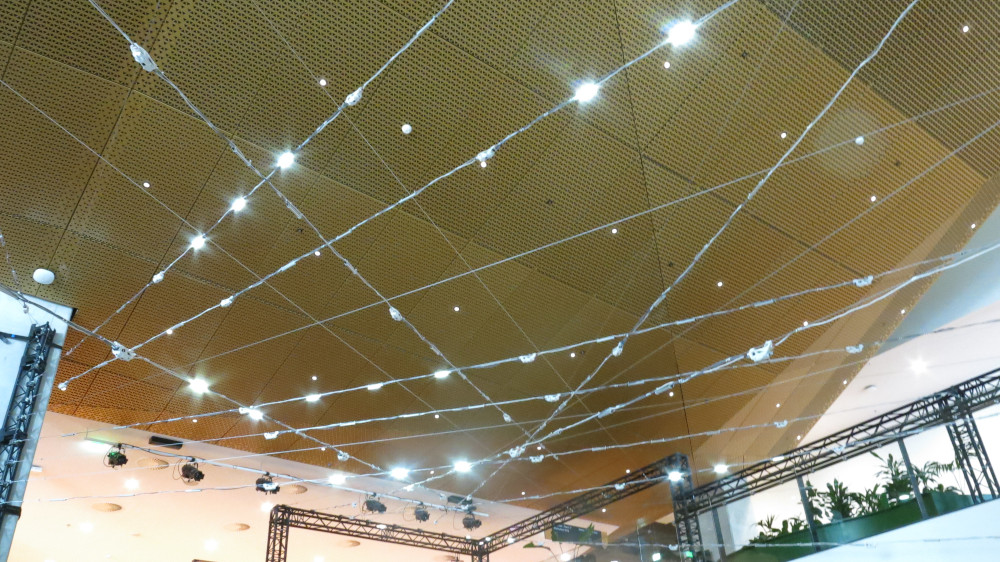Mention in the Volkskrant in Rewire review
Dutch national newpaper the Volkskrant reviewed the Rewire festival and has much praise for N-Polytope, while being quite critical of the organisation of the Rewire festival:
Translation by me (original Dutch below):
The lucky ones to obtain a ticket [to the festival], get their wristbands in the foyer of the concert hall Amare. Behind the cash counters the first disappointment is found. And no, not artistically. The show N-Polytope by Marije Baalman and Chris Salter is a multimedia spectacle that buzzes around you from four speakers.
The artwork seems to be electrified: music tantalizes the ears, on highly tensioned wires led lamps are flickering. With N-Polytope Baalman and Salter want to reflect on early electronic work of the Greek composer Iannis Xenakis. That is not a misplaced bluff: their piece is a sparkling answer to the cosmic works that Xenakis composed in the 1970s with his self-invented computer program UPIC.
But why N-Polytope is presented on the staircase, right in front of the entrance, is a mystery. If one work needs a quiet, dark room, this one does. In broad daylight people are walking around, and chats and hugs are exchanged. It is like playing mikado in stormy weather: no matter how powerful N-Polytope is, little remains.
Choosing the location was weighing the pros and cons: yes, for attention of audience to experience the light and sound in its full depth, a fully dark space would have been preferable. But then the piece would have been set up in a blackbox space, have only been accessible for three days during the festival and have only attracted people who would choose to go to this blackbox. The architecture of the work would have had little interaction with the architecture of the venue it was presented in. Instead we chose for a location where a lot of people would encounter the work, also people who would not normally go and visit a work like this. Also the interaction between the architecture around the staircase in Amare and the architecture of the work have a nice interaction now. And as a plus: the work stays exhibited for a total of two months, making the time, effort and money invested in realising the show more than worthwhile.

Original Dutch text:
De geluksvogels die een ticket hebben bemachtigd, halen hun bandjes op in de foyer van concertgebouw Amare. Achter de kassa’s vindt de eerste teleurstelling plaats. En nee, niet op artistiek gebied. De voorstelling N-Polytope van Marije Baalman en Chris Salter is een multimediaspektakel dat uit vier speakers om je heen gonst.
Het kunstwerk lijkt onder stroom te staan: muziek tintelt de oren, aan hooggespannen kabels knipperen ledlampen. Baalman en Salter willen met N-Polytope reflecteren op vroeg elektronisch werk van de Griekse componist Iannis Xenakis. Dat is geen misplaatste bluf: hun stuk is een sprankelend antwoord op de kosmische werken die Xenakis in de jaren zeventig met zijn zelfbedachte computerprogramma UPIC componeerde.
Maar waarom N-Polytope op de trap, recht voor de ingang, wordt gespeeld, is een raadsel. Als er één werk is dat een stille, donkere ruimte nodig heeft, is dit het wel. In het volle daglicht wandelen mensen rond, er worden praatjes en knuffels uitgewisseld. Het is als mikado spelen bij windkracht 12: hoe krachtig N-Polytope ook is, er blijft weinig van overeind.
- “Rewire Festival maakt op artistiek gebied iedere verwachting waar, maar: de organisatie laat te wensen over”, Dennis Bajram, Volkskrant, April 7, 2025